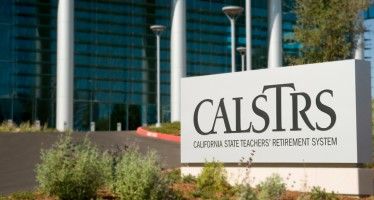High-speed rail Legislative Report lists some, but not all controversies
 Risk, time and money remain the major problems for the construction of California’s high-speed rail project. That’s seen in the biannual Legislative Report of the California High-Speed Rail Authority released this month, as required by law.
Risk, time and money remain the major problems for the construction of California’s high-speed rail project. That’s seen in the biannual Legislative Report of the California High-Speed Rail Authority released this month, as required by law.
The report is a serious attempt of the CHSRA to let the California Legislature know the true status of the program. It includes four pages of “Issues” and 13 pages of “Risks.”
The CHSRA highlighted the project’s groundbreaking, which occurred on Jan. 6:
“The event highlighted the work that is already underway in the Central Valley on Construction Package 1 (CP 1), and underscored the Authority’s commitment to advancing the program on multiple project sections concurrently in order to deliver statewide mobility and environmental benefits sooner.”
However, as CalWatchdog.com noted at the time, the groundbreaking was more appearance than reality, as progress on the project continues at a slow pace.
The report was enthusiastic. “Crucial to the start of heavy construction, 105, or 28 percent, of necessary parcels have been delivered to the DB [Design Build] contractor,” it said. But that also means 72 percent of the parcels still have not been delivered.
The March 3 Los Angeles Times also reported, “The contractor building the first segment of the California bullet train system said Monday it is seeking compensation for delays in the project and is not likely to start any major construction until June or July — months later than state officials said just weeks ago.”
Lawsuits
The report took up the lawsuits against the project:
- “In December 2014, the Authority and the City of Bakersfield announced that they had reached a settlement agreement to dismiss the city’s California Environmental Quality Act (CEQA) lawsuit.”
- “In February 2015, the Authority announced that it had also reached a settlement agreement with Coffee-Brimhall LLC, a developer entity that owns land in Bakersfield.”
- The CHSRA acknowledged the five remaining lawsuits concerning the Fresno to Bakersfield segment: “While the Authority continues to work with its stakeholders and partners through the remaining CEQA lawsuits, the Surface Transportation Board’s approval of the project section’s environmental document in July 2014 allows the Authority to move forward with construction-related activities within the project section up to 7th Standard Road.”
The future of these lawsuits and other CEQA cases may be determined by a case before the California Supreme Court called Friends of Eel River v. North Coast Railroad Authority. The Legislative Report explained:
“A stay is requested to allow time for the California Supreme Court to decide the Friends of Eel River v. North Coast Railroad Authority case which is currently under review. In Eel River the Court will decide whether CEQA is preempted for a publically owned railroad that is under the jurisdiction of the Surface Transportation Board. Eel River will have implications in the CEQA cases filed against the Authority.”
Electrical connectivity
Another issue involved the California Public Utilities Commission. The matter was included in the Legislative Report’s lawsuits section, but not in all aspects. According to the CHSRA:
“On March 21, 2013, the PUC issued the Order Instituting Rulemaking (OIR), at the request of the Authority, which initiated a rulemaking proceeding. The stated goal of the OIR was to ‘determine whether to adopt, amend or repeal regulations governing safety standards for the use of 25kv electric lines to power high-speed trains.’”
Under actions taken, the CHSRA wrote:
“The Authority has reached agreement with all parties to the proceeding on all terms of the General Order. The Authority presented the settlement General Order to the PUC on January 26, 2015. The General Order is currently pending adoption by the PUC, with an anticipated adoption at the March 2015 PUC Commissioners meeting.”
However, the CPUC must conduct an environmental report for electrifying the project, which could in fact have implications for the project. Permits at the earliest are not expected until 2017. According to the CPUC Report:
“The Initial Operating Segment of the High Speed Rail line is Madera to Bakersfield with a targeted operation date of 2022. This requires electrical connectivity at least 2 years prior, with permits to construct facilities by 2017. To grant such permits, the Energy Division needs to start work no later than 2014-2015 to complete environmental review (usually takes at least a year) and permit review by mid-2017”
It is not a simple process. The CPUC report described the required involvement of the CPUC, Pacific Gas & Electric, Southern California Edison and the CHSRA for the purpose of carrying out environmental review.
New lawsuit
Absent from the CHSRA’s Legislative Report is the newest suit, filed on Feb. 9, against CalTrain, the Bay Area commuter system. The suit was filed by the city of Atherton, the Transportation and Education Defense League and the Community Coalition on High-Speed Rail.
Among other things, the lawsuit, as CalWatchdog.com reported at the time:
- Seeks to force the board to acknowledge the impacts CalTrain’s project, and the closely associated high-speed rail project, will have on the San Francisco Peninsula. Specifically, it questions the effect of electrification for the high-speed rail project will have on the peninsula.
- Asserts that, by 2040, CalTrain will not be able to accommodate more passengers. Surplus capacity that would otherwise be available to run more CalTrain trains would instead be committed to the high-speed rail project.
Kit Fox
The CHSRA Legislative Report also did not include its alleged violation of the National Endangered Species Act involving the San Joaquin Kit Fox, at least not directly. As CalWatchdog.com reported last month:
“The environmentalist group Defenders of Wildlife labels it ‘one of the most endangered animals in California.’
“On Jan. 26, the Sacramento office of the Fish and Wildlife Service of the U.S. Department of the Interior sent the CHSRA a letter about the kit fox’ habitat in the project’s 29-mile-long Construction Package 1. The letter charged the CHSRA and the Federal Railroad Authority with causing ‘the loss of nine acres of suitable habitat for the San Joaquin kit fox, located outside the project footprint … and the destruction of a potential San Joaquin kit fox den.’”
Although not addressing the Kit Fox directly, the CHSRA’s Legislative Report said as a retroactive response:
“The Authority released an RFP for Habitat Mitigation Services in January 2015. The habitat mitigation services will satisfy environmental approvals and federal and State permit requirements related to habitat for federally and State-listed endangered or threatened wildlife and wetlands and waters of the United States…. With the habitat mitigation services contract in place, anticipated in spring 2015, the federal and state regulatory agencies will have the mitigation assurances needed to issue permits for CP 2-3 and CP 4.”
Cap-and-trade
Finally, the lawsuit over using $250 million of cap-and-trade money to build the high-speed rail project also was not disclosed in the Legislative Report. As CalWatchdog.com reported:
“TRANSDEF charged that cap-and-trade revenues, according to AB32, only can go to reduce greenhouse-gas emissions. TRANSDEF President David Schonbrunn said in the statement, ‘The claimed GHG [greenhouse gas] emissions reductions are a very expensive fantasy,’ because the California High-Speed Rail Authority depends ‘on $30 billion of project funding that the Authority doesn’t have and can’t get.'”
In sum, although the CHSRA included a great deal in its latest Legislative Report, it also did not include some important information. However, outside the report, it is lawsuits, the state’s financial position and the facts on the ground that will determine the project’s fate.
Kathy Hamilton is the Ralph Nader of high-speed rail, continually uncovering hidden aspects of the project and revealing them to the public. She started writing in order to tell local communities how the project affects them and her reach grew statewide. She has written more than 225 articles on high-speed rail and attended hundreds of state and local meetings. She is a board member of the Community Coalition on High-Speed Rail; has testified at government hearings; has provided public testimony and court declarations on public records act requests; has given public testimony; and has provided transcripts for the validation of court cases.
Related Articles
Legislature approves $50-per-month diaper benefit
Low-income Californians could soon receive a monthly, $50 benefit for diaper purchases, according to a bill approved by the Legislature on
Another Taxing Tax Levy
JULY 22, 2010 By KATY GRIMES Senator Gloria Romero, D-Los Angeles, is sponsoring a tax bill that the California Chamber
Worst-case scenarios for CalSTRS and CalPERS
Sometimes it’s good to consider worst-case scenarios. Maybe they won’t even happen, but it can help to look at every possibility.




